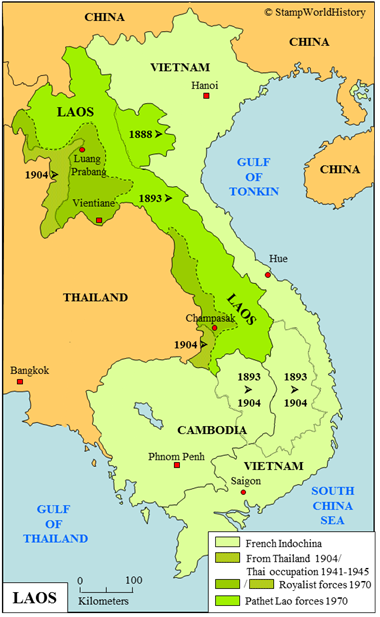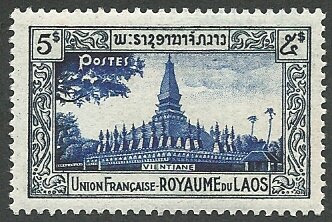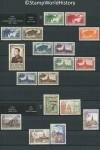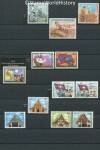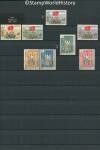ລາວ
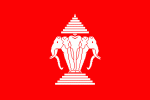
Laos
Kingdom
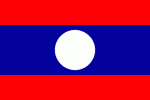
Laos
Republic
Quick reference
General issues: Kingdom is association with France 1951-1954, Kingdom 1954-1975, Democratic Peoples Republic 1975-Present
Country name on general issues: Laos, Lao
Special issues: Indian Forces in Laos 1954-1965, Indian Forces in Laos & Vietnam 1965-1968, Pathet Lao 1961-1975
Currency: 1 Piaster = 100 Cent 1951-1955, 1 Kip = 100 Cent 1955-Present
Population: 1 985 000 in 1951, 6 770 000 in 2013
Political history Laos
Laos is part of Indochina in southeastern Asia. In the 19th century Laos is part of Thailand[1]Then known as Siam. . In the second part of the 19th century the French extend their influence in Indochina. The first parts of what will later be Laos are occupied by the French in 1888. After the Franco-Siamese war of 1893, Thailand cedes a number of territories that the French group together to form Laos. Laos becomes a French protectorate, governed as part of French Indochina, the federation of French possessions in Indochina that has been established in 1887. The territory of Laos is further extended at the expense of Siam in 1904. At the same time, parts of Laos are transferred to Cambodia and to what is currently Vietnam. The borders of Laos as we know them until today are thus defined.
The French leave the local Laotian rulers in place – the king of Luang Prabang in the north and the prince of Champasak in the south. Their power is only nominal though, the real power is in the hands of the French colonial administration.
In WWII, Laos is occupied by Japan in 1941. The Japanese leave the French colonial administration – loyal to the Vichy regime – largely in place. The parts of Laos that were ceded by Thailand in 1904 are occupied by Thailand – Thailand being allied to Japan in WWII. After the war, Chinese forces enter Laos to manage the capitulation of the Japanese. In 1946 the French colonial administration is re-established. The territories occupied by Thailand are returned to the French.
Laos, after the war, progresses step by step towards independence. In 1949, Laos becomes a self governing kingdom in association with France. The king of Luang Prabang assumes the throne as the king of Laos. In 1954, Laos becomes a fully independent kingdom. From 1953, Laos is involved in a civil war, the communist Pathet Lao seeking to gain power. The Pathet Lao gradually gains the upper hand and, in 1975, the democratic peoples republic of Laos is proclaimed.
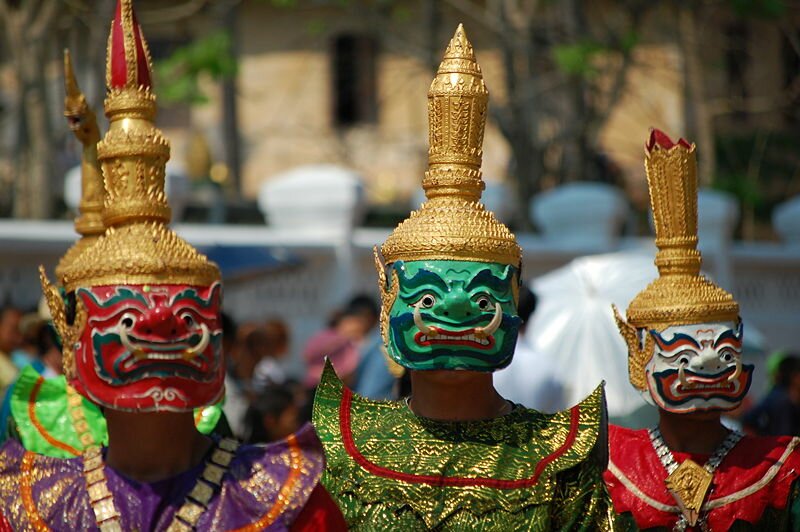
New Year
Laos is, from 1946 until 1954, involved in the First Indochinese War that is fought mainly in Vietnam. The war ends by the Geneva peace agreements. The United Nations International Control Commission is also deployed in Laos to supervise the execution of the agreements. The International Control Commission was active in Indochina until 1973. Laos is also involved in the Second Indochinese, or Vietnam War, from 1955 until 1975. Due to bases and supply lines of the Vietcong located in Laos, the country is heavily bombed by the United States.
When, in 1975, the Pathet Lao come to power, they implement a strict socialist economic policy, that, since the 1980’s, has been liberalized. Though Laos has known steady growth since then, it is still a less developed country.
Postal history Laos
In Laos the stamps of French Indochina are used from 1893. The first stamps specifically issued for Laos are the first issues of the kingdom of Laos in 1951. The Pathet Lao issues stamps from 1961 until 1975 for use in the parts of the country it controls. In 1975, the issues of the kingdom of Laos are superseded by the issues of the democratic peoples republic of Laos.
The forces from India that, from 1954, are part of the International Control Commission use stamps issued for these forces. These were, from 1954 until 1965, Indian stamps with overprints reading ‘International Commission Laos’ in Hindi and, from 1965, Indian stamps with an overprint reading ‘ICC’ issued for use in both Laos and Vietnam.
Album pages
← Previous page: LabuanNext page: Latakia →

